1. Navy Inducts INS Arnala – Defence & Security
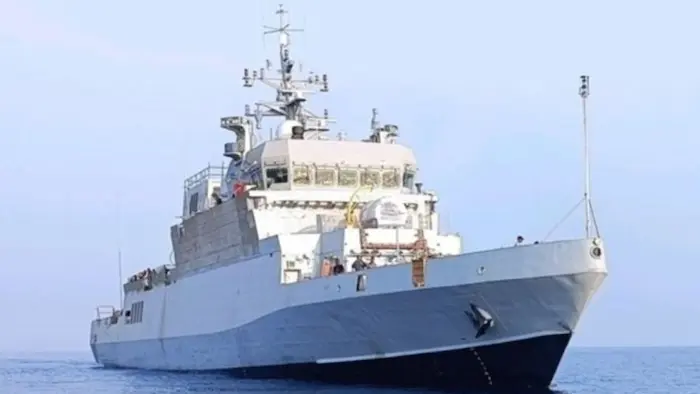
Why in News?
The Indian Navy has commissioned INS Arnala, the first Anti-Submarine Warfare Shallow Water Craft (ASW-SWC), into its Eastern Naval Command at Visakhapatnam, enhancing India’s shallow-water maritime defense capabilities.
Key Highlights
About INS Arnala
- First vessel of the ASW-SWC class, specifically designed for shallow water anti-submarine operations.
- Named after Arnala Fort (Maharashtra), honoring India’s historical naval heritage.
- Developed under a Public-Private Partnership by GRSE (Kolkata) and L&T Shipbuilders.
Design & Technology
- Length: 77.6 meters.
- Propulsion: First Indian Navy ship with a Diesel Engine–Waterjet combination, allowing better maneuverability in shallow waters.
- Weapon Systems:
- Lightweight torpedoes
- Rocket launchers
- Anti-torpedo decoys
- Mine-laying equipment
- Sensors:
- Hull-Mounted Sonar (Abhay)
- Low-Frequency Variable Depth Sonar (LFVDS)
- Underwater Acoustic Communication System (UWACS)
Operational Roles
- Anti-Submarine Warfare (ASW)
- Coastal surveillance
- Search & Rescue (SAR)
- Maritime patrolling in shallow/coastal areas (<30 m depth)
Strategic Significance
- Replaces ageing Abhay-class corvettes, modernizing India’s littoral defense fleet.
- Designed to detect midget submarines and UUVs, a growing threat in shallow waters.
- Over 80% indigenous components, reinforcing the Aatmanirbhar Bharat initiative.
- Part of a larger project to build 16 ASW-SWC class ships, enhancing India’s deterrence capabilities in the Indian Ocean Region (IOR).
Summary
INS Arnala marks a major milestone in India’s efforts to modernize its navy with indigenous, state-of-the-art platforms. It enhances India’s ability to counter underwater threats in shallow coastal regions and reflects strong progress in indigenous defense production under the Make in India campaign.
Exam Connect – Possible Questions
Prelims
- INS Arnala, recently inducted into the Indian Navy, is primarily designed for:
a). High-seas combat operations
b). Anti-Submarine Warfare in shallow waters
c). Amphibious landing operations
d).Aircraft carrier support operations
Answer: b). Anti-Submarine Warfare in shallow waters - Which of the following statements is/are correct regarding INS Arnala?
- It is powered by a Diesel Engine–Waterjet combination.
- It is equipped with Hull-Mounted Sonar and LFVDS.
- It was developed entirely by DRDO.
a) 1 and 2 only
b) 2 and 3 only
c) 1 and 3 only
d) 1, 2 and 3
Answer: a) 1 and 2 only
Mains
- Discuss the strategic importance of Anti-Submarine Warfare Shallow Water Crafts (ASW-SWC) like INS Arnala for India’s maritime security. How does it align with India’s self-reliance goals in defense manufacturing?
- In the context of increasing underwater threats and regional naval competition, evaluate the role of indigenous platforms like INS Arnala in ensuring coastal security and deterrence.
2. India’s Green Hydrogen Mission – Domestic Push Gains Momentum Amidst Weak Export Outlook – Environment
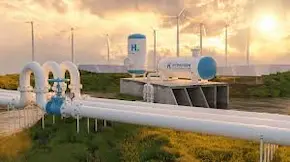
Why in News?
Amid sluggish global demand and export uncertainties, India is pivoting towards building a strong domestic market for green hydrogen under the National Green Hydrogen Mission, which is emerging as a key pillar of the country’s clean energy transition.
Key Highlights
National Green Hydrogen Mission (NGHM)
- Launched: January 2023
- Objective: To make India a global hub for the production, use, and export of green hydrogen by 2030.
- Total Outlay: ₹19,744 crore
- Target: Production of 5 million metric tonnes (MMT) of green hydrogen annually by 2030, with associated renewable energy capacity of ~125 GW.
Current Strategy Shift
- Domestic Focus: Due to weak international export prospects (driven by geopolitical tensions and competition), India is focusing on developing internal demand.
- Recent tender for 8 lakh tonnes of green hydrogen received full subscription—a sign of growing domestic interest.
Cost Challenge
- Green Hydrogen Cost: Currently priced at $4–$5 per kg
- Grey Hydrogen Cost (from fossil fuels): ~$2.3–$2.5 per kg
- To bridge this gap, policy support and financial incentives are being considered (like viability gap funding, mandates, subsidies).
Strategic Relevance
- Complements India’s renewable energy mission (solar, wind).
- Critical to decarbonize hard-to-abate sectors: steel, cement, fertilizer, and heavy transport.
- Aligns with India’s 2070 net-zero target and commitments under the Paris Agreement.
Environmental & Economic Significance
| Aspect | Importance |
|---|---|
| Environmental | Replaces carbon-intensive grey hydrogen and fossil fuels |
| Energy Security | Reduces dependence on imported oil & gas |
| Industrial Use | Powers green steel, ammonia, and long-haul transport |
| Global Competitiveness | Positions India as a low-cost producer in the long term |
Summary
India’s National Green Hydrogen Mission is at a critical juncture. While export markets remain uncertain, the government’s strategic shift to domestic demand and growing industrial interest show promise. The success of this mission depends on cost reduction, policy incentives, and tech innovation. This aligns with broader goals of energy security, industrial decarbonization, and sustainable development.
Exam Connect – Possible Questions
Prelims
- Which of the following statements regarding Green Hydrogen in India is correct?
a) It is produced by using fossil fuels without emitting carbon dioxide
b) It is cheaper than grey hydrogen in current market conditions
c) India aims to produce 5 MMT of green hydrogen by 2030 under a national mission
d) The National Green Hydrogen Mission was launched in 2018
Answer: c) India aims to produce 5 MMT of green hydrogen by 2030 under a national mission - What is the major challenge facing green hydrogen adoption in India?
a) Lack of industrial use
b) High production cost compared to grey hydrogen
c) Excess global demand causing supply shortages
d) Absence of renewable energy sources
Answer: b) High production cost compared to grey hydrogen
Mains
- Discuss the strategic importance of the National Green Hydrogen Mission in India’s transition to a low-carbon economy. What challenges must be addressed to ensure its success?
- With the decline in global export potential, India is focusing on domestic applications of green hydrogen. Critically evaluate this shift in the context of India’s industrial and environmental goals.
3. Revised Green India Mission – Forest Revival & Climate Resilience – Environment
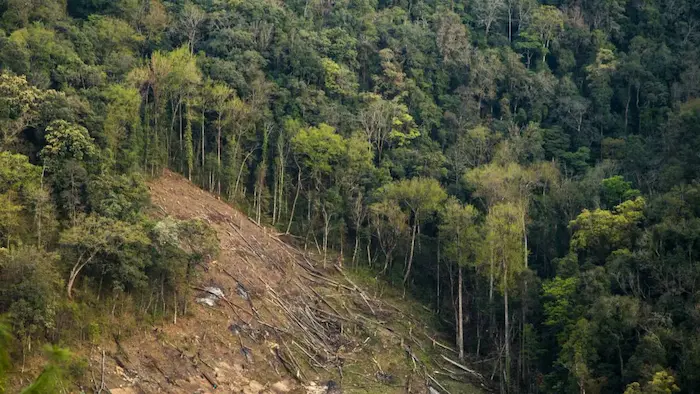
Why in News?
The Government of India has unveiled a revised roadmap for the National Mission for a Green India (GIM), intensifying efforts toward afforestation, ecological restoration, and climate resilience. This move aligns with India’s international climate pledges and targets critical ecological zones such as the Aravalli ranges, Himalayas, mangroves, and Western Ghats.
What is the Green India Mission (GIM)?
- Launched: 2014
- Part of: National Action Plan on Climate Change (NAPCC)
- Primary Goals:
- Increase forest/tree cover by 5 million hectares (Mha)
- Improve quality of forest cover on an additional 5 Mha
- Support ecosystem restoration and biodiversity conservation
Achievements So Far
- 11.22 million hectares of area supported through plantation/afforestation between 2015–16 and 2020–21
- Between 2019–20 and 2023–24, ₹124.71 crore allocated to 18 states; ₹75.55 crore utilized
Key Features of the Revised Green India Mission
Updated Focus Areas
- Region-Specific Planning based on:
- Ecological vulnerability
- Carbon sequestration potential
- Land degradation levels
- State-specific feedback and scientific consultation
- Targeted Landscapes:
- Indian Himalayas
- Mangrove ecosystems
- Western Ghats
- Aravalli Ranges (integrated with Aravalli Green Wall Project)
- Western Ghats Focus:
- Afforestation
- Groundwater recharge
- Eco-restoration of abandoned mining zones
Strategy for Land Degradation & Desertification
- Extent of Land Degradation: ~97.85 Mha (1/3rd of India’s land) as per ISRO’s 2018–19 data
- India’s Global Commitments:
- Restore 26 Mha of degraded land by 2030
- Create an additional carbon sink of 2.5–3 billion tonnes of CO₂ via increased forest/tree cover
Focus on Open Forests
- Open forests identified as cost-effective for carbon sequestration
- Potential to sequester 1.89 billion tonnes of CO₂ over 15 Mha
Relevance to Climate Commitments
- The revised GIM supports:
- India’s Nationally Determined Contributions (NDCs) under the Paris Agreement
- UN Convention to Combat Desertification (UNCCD)
- Land Degradation Neutrality (LDN) goals
- Helps address:
- Global warming
- Loss of biodiversity
- Water stress and livelihood vulnerabilities
Summary
The revised Green India Mission marks a strategic shift toward ecological zone-based afforestation, focusing on climate-resilient landscapes. It enhances India’s ability to meet international climate goals, combat land degradation, and restore forest ecosystems across vulnerable zones. This holistic approach integrates science, policy, and local feedback for sustainable environmental governance.
Exam Connect – Possible Questions
Prelims
- Which of the following is NOT a targeted ecosystem under the revised Green India Mission?
a) Mangroves
b) Western Ghats
c) Thar Desert Sand Dunes
d) Aravalli ranges
Answer: c) Thar Desert Sand Dunes - Which of the following is a part of the National Action Plan on Climate Change (NAPCC)?
a) National Biodiversity Authority
b) National Green Tribunal
c) National Mission for Green India
d) National Adaptation Fund for Climate Change
Answer: c) National Mission for Green India - The revised Green India Mission seeks to create a carbon sink of:
a) 1.5–2 billion tonnes of CO₂
b) 2.5–3 billion tonnes of CO₂
c) 3.5–4 billion tonnes of CO₂
d) 5 billion tonnes of CO₂
Answer: b) 2.5–3 billion tonnes of CO₂
Mains
- What are the objectives of the Green India Mission? Discuss how the revised roadmap enhances its effectiveness in tackling climate change and land degradation.
- Ecological restoration and afforestation are key to achieving India’s climate targets. Critically assess the potential of the Green India Mission in fulfilling India’s international environmental commitments.
4. Sharavathi Lion-Tailed Macaque Wildlife Sanctuary – Conservation vs Livelihood Tensions – Environment
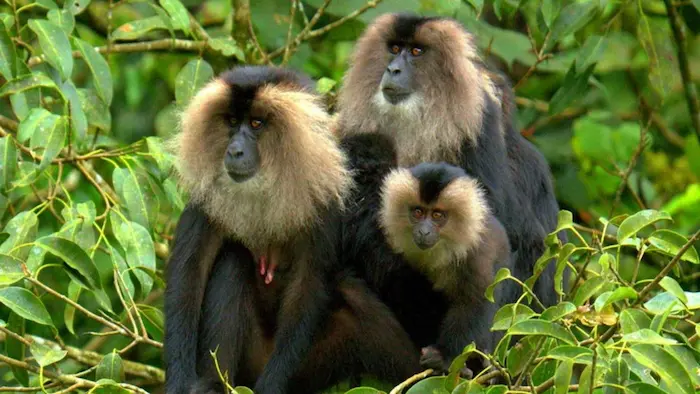
Why in News?
Tensions have escalated in Sagar taluk (Shivamogga District, Karnataka) following the arrest and later release on bail of farmers accused of entering the Sharavathi Lion-Tailed Macaque Wildlife Sanctuary, highlighting conflicts between wildlife protection laws and local livelihood practices.
Key Highlights
Location & Geography
- Situated in the Sharavathi River Valley, Sagar taluk, Shivamogga District, Karnataka.
- Forms part of the Western Ghats, a UNESCO World Heritage Site known for rich biodiversity and endemism.
- Area: 431.23 sq. km (includes Linganamakki Reservoir).
- Topography: Undulating terrain with altitude ranging from 94 m to 1102 m.
Sanctuary Formation
- Created by merging:
- Sharavathi Valley Wildlife Sanctuary
- Aghanashini Lion-Tailed Macaque Conservation Reserve
- Surrounding reserve forests
- Borders the Mookambika Wildlife Sanctuary to the southwest.
Ecological Significance
Vegetation Types
- Tropical evergreen forests
- Semi-evergreen forests
- Moist deciduous forests
- Grasslands and savannas
Flora
- Prominent species: Dhoopa, Gulmavu, Surahonne, Mavu, Nandi
Fauna
- Flagship species: Lion-Tailed Macaque (Macaca silenus) – Endangered & Endemic to Western Ghats.
- Other important fauna:
- Big cats: Tiger, leopard
- Carnivores: Wild dog, jackal
- Herbivores: Spotted deer, sambar, barking deer, mouse deer, wild pig
- Primates: Bonnet macaque, common langur
- Arboreal mammals: Malabar giant squirrel
- The sanctuary is crucial for habitat continuity and gene flow for Western Ghats species.
Conservation vs Local Rights
- Recent conflict: Arrest of farmers reflects a common issue in many conservation zones—tension between environmental protection and livelihood rights of local communities.
- Points to a need for:
- Participatory conservation
- Community-based forest governance
- Clear demarcation of sanctuary boundaries and sustainable livelihood support
Summary
The Sharavathi Lion-Tailed Macaque Wildlife Sanctuary serves as a critical habitat for endangered and endemic species, particularly the lion-tailed macaque. While its biodiversity significance is undeniable, recent events underscore the challenge of balancing conservation with local human activity, a key issue in environmental governance.
Exam Connect – Possible Questions
Prelims
- Which of the following species is endemic to the Western Ghats and is a key focus of the Sharavathi Lion-Tailed Macaque Wildlife Sanctuary?
a) Malabar civet
b) Lion-tailed macaque
c) Bonnet macaque
d) Nilgiri langur
Answer: b) Lion-tailed macaque - Sharavathi Lion-Tailed Macaque Wildlife Sanctuary is located in which Indian state?
a) Kerala
b) Tamil Nadu
c) Karnataka
d) Maharashtra
Answer: c) Karnataka - Which of the following sanctuaries shares its boundary with Sharavathi Lion-Tailed Macaque Wildlife Sanctuary?
a) Kudremukh National Park
b) Mookambika Wildlife Sanctuary
c) Bhadra Wildlife Sanctuary
d) Nagarhole National Park
Answer: b) Mookambika Wildlife Sanctuary
Mains
- Discuss the ecological importance of the Sharavathi Lion-Tailed Macaque Wildlife Sanctuary in the context of biodiversity conservation in the Western Ghats.
- Conflicts between conservation objectives and the livelihood needs of local communities are common in India’s protected areas. Examine the case of Sharavathi Sanctuary in this context and suggest solutions.
5. MCA21 Portal – Transition to Version 3 for Improved Corporate Governance – Economy
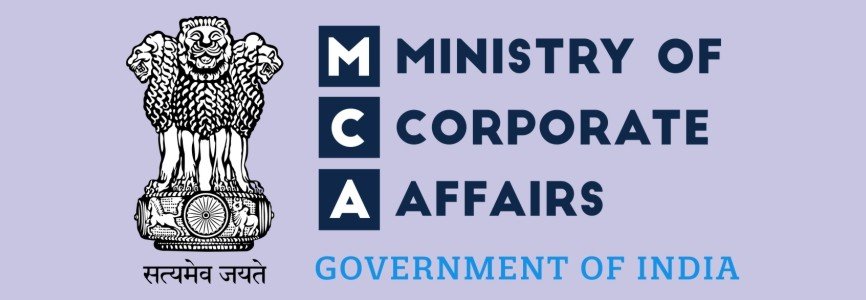
Why in News?
The Ministry of Corporate Affairs (MCA) has temporarily suspended the MCA21 portal for three weeks to enable a transition from Version 2 (V2) to the enhanced MCA21 Version 3 (V3). During this period, late filing fees for 13 key e-forms have been waived to ease the compliance burden.
What is MCA21 Portal?
- MCA21 is the flagship e-governance portal of the Ministry of Corporate Affairs.
- Launched under the National e-Governance Plan (NeGP) to simplify access to services related to:
- Company registration
- Legal compliance
- Public document access
- Investor services
Key Services Provided
| Service Category | Examples |
|---|---|
| Compliance Services | Filing statutory documents, company incorporation |
| Identification | Apply for Director Identification Number (DIN) |
| Digital Documentation | Obtain Digital Signature Certificates (DSC) |
| Corporate Data Access | View master data of companies/LLPs |
| Investor Services | Lodge complaints, track grievance status |
| Fee Payment Services | Make online payments for filings and registrations |
Features of MCA21 V3 (Upgraded Platform)
- Improved user interface and enhanced accessibility
- Integration with National e-Governance Services Delivery Gateway (NSDG)
- Proactive compliance monitoring
- Faster processing of forms and grievance redressal
- Automation of compliance mechanisms under:
- Companies Act, 2013
- Limited Liability Partnership Act, 2008
Significance for the Indian Economy
- Ease of Doing Business: Streamlines corporate legal formalities and reduces bureaucratic delays.
- Transparency & Corporate Governance: Public access to company data promotes accountability.
- Investor Protection: Enhances grievance redressal and public engagement with corporate entities.
- Digital Transformation: Aligns with India’s push for paperless, faceless governance.
Summary
The MCA21 portal is a cornerstone of India’s corporate e-governance framework. Its upgrade to Version 3 reflects a broader trend toward automation, ease of doing business, and improved legal compliance. This move is crucial in supporting businesses and startups while ensuring effective monitoring under corporate laws.
Exam Connect – Possible Questions
Prelims
- The MCA21 portal is associated with which of the following ministries?
a) Ministry of Finance
b) Ministry of Commerce and Industry
c) Ministry of Corporate Affairs
d) Ministry of Electronics and IT
Answer: c) Ministry of Corporate Affairs - Which of the following services are available on the MCA21 portal?
- Company registration
- Filing income tax returns
- Accessing public documents of registered companies
- Applying for Director Identification Number (DIN)
a) 1, 2, and 3
b) 1, 3, and 4
c) 2 and 4 only
d) 1 and 2 only
Answer: b) 1, 3, and 4
Mains
- Discuss the significance of the MCA21 portal in promoting ease of doing business and corporate governance in India. How will the transition to MCA21 V3 improve these outcomes?
- Evaluate the role of digital platforms like MCA21 in strengthening India’s regulatory ecosystem for businesses. What challenges could arise in their implementation?
6. SEBI Allows Merchant Bankers to Offer Advisory Services Without Separate Legal Entity – Economy
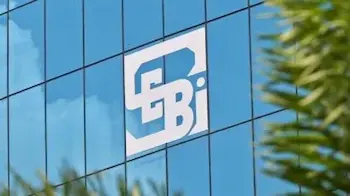
Why in News?
The Securities and Exchange Board of India (SEBI) has announced that Merchant Bankers (MBs) can now undertake unregulated advisory and consultancy services (like corporate advisory, financial strategy consulting, etc.) without having to form a separate legal entity. This reform is aimed at improving operational flexibility and efficiency in the financial sector.
What is Merchant Banking?
Definition:
Merchant Banking refers to a set of specialized financial services for corporate clients and businesses, which include capital raising, investment advisory, and strategic financial management.
Role of Merchant Bankers:
- Act as intermediaries between companies and investors
- Advise on:
- Capital raising (IPOs, rights issues)
- Mergers & Acquisitions (M&A)
- Private equity and venture capital
- Business restructuring & debt syndication
- Provide project finance and portfolio management services to large corporations
Core Functions
| Function | Description |
|---|---|
| Issue Management | Assisting companies in public offerings (IPOs), rights issues, debentures |
| Advisory Services | M&A, joint ventures, business strategy |
| Corporate Financing | Debt and equity structuring, syndication |
| Private Placement | Helping raise funds through non-public offerings |
| Underwriting | Guaranteeing the subscription of securities in case of under-subscription |
Regulatory Framework
- Regulator: SEBI (Securities and Exchange Board of India)
- Key Regulations:
- Must be registered with SEBI
- Minimum net worth criteria apply (₹5 crore for Category I MBs)
- Must follow a code of conduct ensuring:
- Transparency
- Due diligence
- Conflict of interest management
- Subject to SEBI inspections, audits, and potential penalties for non-compliance.
Recent SEBI Reforms – What Changed?
| Aspect | Old Framework | New Update |
|---|---|---|
| Advisory Services | Needed a separate legal entity for consultancy | Merchant bankers can now provide these services under the same entity |
| Impact | Regulatory duplication, compliance burden | Greater ease of doing business, increased profitability and efficiency |
Significance for Indian Economy
- Promotes financial innovation and market efficiency
- Strengthens the capital market ecosystem
- Improves ease of doing business for financial service providers
- Encourages multi-functional financial intermediaries
- Helps businesses access capital and strategic guidance more easily
Summary
Merchant banking is an essential pillar of India’s financial system, offering corporate clients a range of capital market and advisory services. SEBI’s recent reform to allow merchant bankers to offer advisory services without a separate entity enhances their operational flexibility, improves efficiency, and may lead to a more dynamic financial sector.
Exam Connect – Possible Questions
Prelims
- Merchant banking primarily involves:
a) Retail lending and deposit services
b) Issuing government bonds
c) Corporate financial services like capital raising and M&A advisory
d) Insurance underwriting
Answer: c) Corporate financial services like capital raising and M&A advisory - Which regulatory body oversees the functioning of Merchant Bankers in India?
a) RBI
b) Ministry of Finance
c) SEBI
d) IRDAI
Answer: c) SEBI - As per recent SEBI guidelines, merchant bankers can now:
a) Accept public deposits
b) Offer advisory services without creating a separate entity
c) Regulate private equity investments
d) Act as rating agencies
Answer: b) Offer advisory services without creating a separate entity
Mains
- Explain the role of merchant bankers in India’s capital market ecosystem. How does SEBI’s recent reform impact their operational structure and efficiency?
- Evaluate the regulatory challenges and recent developments surrounding merchant banking in India. In what ways can these institutions contribute to corporate sector growth?
7. India–Croatia Bilateral Relations Strengthened by High-Level Visit – InternationaI Relations
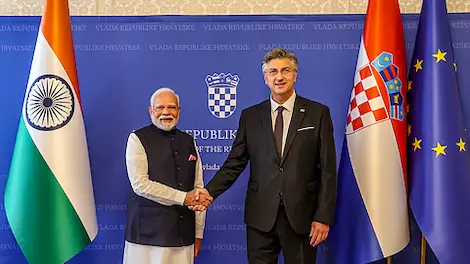
Why in News?
The Prime Minister of India recently paid an official visit to Croatia, marking a significant diplomatic milestone. The visit involved:
- Acknowledgement of Croatia’s solidarity after the Pahalgam terror attack
- Focused discussions on deepening defense cooperation and broader bilateral ties
India–Croatia Bilateral Relations: Overview
| Dimension | Key Developments |
|---|---|
| Diplomatic Relations | Established in 1992 (post-Croatia’s independence) |
| Strategic Focus Areas | Defense, Maritime trade, Science & Technology, Cultural exchange |
| Defense Cooperation | Increasing scope for collaboration in shipbuilding, technology sharing, and military training |
| Economic Engagement | Modest trade volume with potential to expand in pharmaceuticals, IT, tourism, and manufacturing |
| People-to-People Ties | Educational exchanges and growing Indian diaspora in Croatia |
About Croatia – Geopolitical and Strategic Relevance
Location
- Situated in Southeastern Europe, on the northwestern part of the Balkan Peninsula
- Bordered by:
- Slovenia (NW)
- Hungary (NE)
- Serbia (E)
- Bosnia & Herzegovina, Montenegro (SE)
- Adriatic Sea (W), with a maritime border with Italy
Geography
- Terrain: Fertile plains (north), low mountains and highlands (coastal regions)
- Mountain Ranges: Dinaric Alps, Velebit, Velika Kapela
- Major Rivers: Drava, Sava, Krka
Climate
- Mediterranean climate, favorable for tourism and agriculture
Capital: Zagreb
- Croatia’s administrative, cultural, and economic hub
Geopolitical Significance
| Factor | Significance |
|---|---|
| EU Membership | Provides access to the European Union’s single market |
| NATO Membership | Enhances defense cooperation potential with India |
| Strategic Ports | Rijeka, Split, and Ploče are part of the TEN-T Network, making Croatia a gateway for EU trade |
| Indo-European Connect | Croatia can serve as a bridge between India and Central/Eastern Europe, especially in maritime and technology cooperation |
Summary
The Indian PM’s visit to Croatia reflects a clear intent to expand bilateral cooperation in areas such as defense, maritime trade, and technology. With Croatia’s EU and NATO memberships, and its strategic port infrastructure, the partnership could offer India a strategic entry point into European markets and defense collaborations.
Exam Connect – Possible Questions
Prelims
- Which of the following countries shares a border with Croatia?
a) Austria
b) Slovakia
c) Montenegro
d) Bulgaria
Answer: c) Montenegro - Which organization is Croatia a member of?
a) Shanghai Cooperation Organisation
b) BRICS
c) NATO and European Union
d) African Union
Answer: c) NATO and European Union - Which city is the capital of Croatia?
a) Split
b) Zagreb
c) Rijeka
d) Dubrovnik
Answer: b) b) Zagreb
Mains
- Discuss the strategic significance of enhancing India’s relations with Eastern European countries such as Croatia. How can this partnership support India’s foreign policy and economic objectives?
- India’s outreach to smaller EU nations like Croatia reflects a diversification strategy in its foreign relations. Examine the potential benefits and challenges of this approach.
8. Nuclear Non-Proliferation Treaty (NPT) – Iran’s Possible Exit and Global Implications – InternationaI Relations
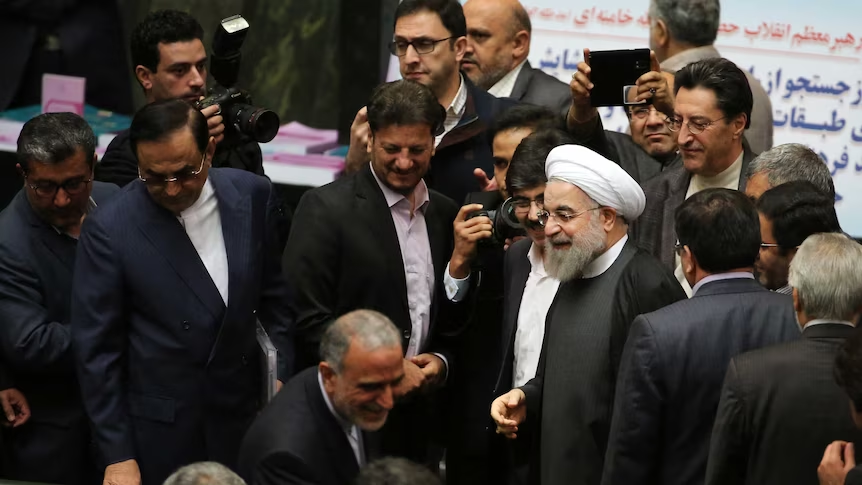
Why in News?
Iran’s Parliament has begun drafting legislation to withdraw from the Nuclear Non-Proliferation Treaty (NPT), amid growing tensions with Israel and increasing international pressure over its nuclear program. This development has sparked global concerns over a potential nuclear arms race in the Middle East.
What is the NPT?
Overview
- Full Name: Treaty on the Non-Proliferation of Nuclear Weapons (NPT)
- Opened for Signature: June 12, 1968
- Came into Force: March 5, 1970
- Objective: Prevent the spread of nuclear weapons, promote peaceful use of nuclear energy, and pursue nuclear disarmament.
Key Provisions of the NPT
| Clause | Description |
|---|---|
| Three Pillars | 1. Non-proliferation – Restrict the spread of nuclear weapons 2. Disarmament – Promote gradual nuclear disarmament 3. Peaceful Use – Allow nuclear energy for civilian purposes under IAEA safeguards |
| Classification of States | – Nuclear Weapon States (NWS): Nations that tested nuclear weapons before Jan 1, 1967 (US, UK, France, Russia, China) – Non-Nuclear Weapon States (NNWS): All others |
| Obligations | – NNWS: Cannot acquire or develop nuclear weapons – NWS: Cannot transfer nuclear weapons or assist others in acquiring them |
| Monitoring Agency | International Atomic Energy Agency (IAEA) – Conducts inspections and monitors compliance |
| Withdrawal Clause (Article 10) | A country can withdraw with 3 months’ notice if its supreme national interests are threatened |
India’s Position on NPT
| Factor | India’s View |
|---|---|
| Signatory Status | Not a member of the NPT |
| Reasons | Views the treaty as discriminatory, as it allows only 5 countries to have nuclear weapons permanently |
| Nuclear Policy | Conducted first nuclear test in 1974 (Smiling Buddha) Follows “No First Use” doctrine |
| Global Recognition | Though not a signatory, India is regarded as a responsible nuclear power, and follows international non-proliferation norms voluntarily |
Geopolitical Concerns over Iran’s Potential Withdrawal
Countries Outside or Withdrawing
| Status | Countries |
|---|---|
| Never Signed | India, Pakistan, Israel |
| Withdrew | North Korea (2003) |
| Threatening Withdrawal | Iran (current case) |
Iran’s Case
- Signatory since 1970
- Currently under IAEA inspections
- Considering withdrawal due to:
- IAEA censure
- Alleged violations
- Strategic threats from Israel
- If Iran exits:
- IAEA inspections could halt
- Potential for a nuclear arms race in West Asia
- Undermines global non-proliferation regime
Summary
The NPT remains the cornerstone of global nuclear governance, but geopolitical tensions and perceived inequities in its structure have led countries like India and Iran to question its fairness. Iran’s potential exit signals the fragility of international arms control frameworks and could escalate regional instability, especially in the Middle East.
Exam Connect – Possible Questions
Prelims
- Which of the following countries is a recognized Nuclear Weapon State under the NPT?
a) India
b) Pakistan
c) China
d) Israel
Answer: c) China - Which agency is primarily responsible for monitoring compliance under the NPT?
a) CTBTO
b) IAEA
c) WHO
d) UNHCR
Answer: b) IAEA - Under the NPT, which countries are allowed to possess nuclear weapons legally?
a) Countries that tested weapons before 1970
b) UN Security Council permanent members only
c) Countries that tested before January 1, 1967
d) Any country that has declared nuclear capabilities
Answer: c) Countries that tested before January 1, 1967
Mains
- Discuss the key features and objectives of the Nuclear Non-Proliferation Treaty (NPT). Why has India consistently refused to sign it?
- The growing dissatisfaction with the NPT framework among certain countries reflects deeper issues in global nuclear governance. Critically evaluate this in the light of Iran’s recent stance.

